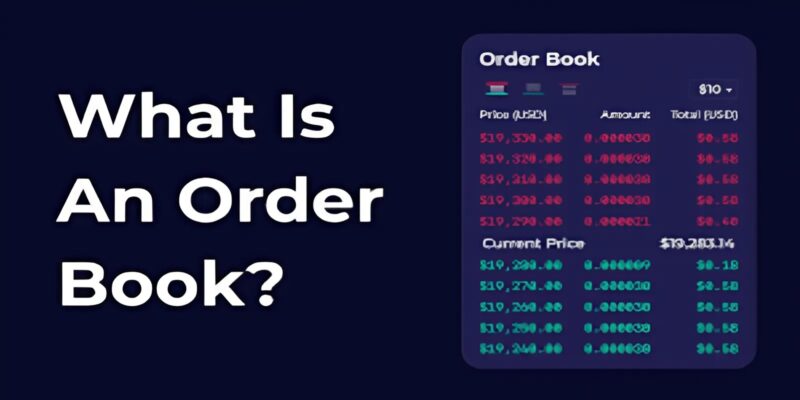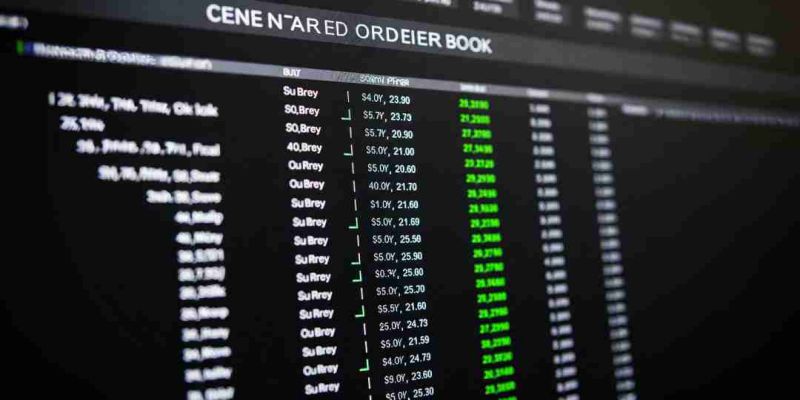
In the world of finance, understanding trading tools is essential, and the Order Book is one of the most fundamental and indispensable components. Understanding how an order book works can help traders make informed decisions, optimize their strategies, and improve trading outcomes. In this article, we will explore the order book, its components, how it works, and its significance in financial markets, including cryptocurrency exchanges like Bitmart’s order book.
What is an Order Book?
An order book is a list of all buy and sell orders for an asset in the market. Financial exchanges (including stock markets, cryptocurrencies, forex, etc.) use the order book to help participants monitor transactions and determine the market price of an asset.
The order book plays a crucial role in displaying supply and demand dynamics, allowing traders to understand the current price level and make more informed decisions.
Order books explained: This refers to the detailed process of how buy and sell orders are arranged and displayed within the order book. Understanding how order books work helps investors easily track price movements and create more effective trading strategies.

Components of an Order Book
An order book is a live, dynamic list of all buy and sell orders for a particular asset. It is updated in real-time as traders place and cancel orders. Below is a deeper dive into the key components of an order book:
Bids (Buy Orders)
Bids represent the maximum prices at which buyers are willing to purchase an asset. The bids are ordered from highest to lowest, with the highest bid showing the price the buyer is willing to pay.
This order helps sellers decide at what price they might want to sell their asset. A higher bid indicates stronger demand, which can influence the seller to sell at a higher price.
Asks (Sell Orders)
Asks are the prices at which sellers are offering to sell an asset. These are ranked from the lowest to the highest ask price.
The lowest ask is the first price at which a seller is willing to sell. If the buyer is willing to meet this price, the order is matched, and the transaction occurs.
Limit Orders and Market Orders
Understanding the difference between limit and market orders is crucial for traders, as each serves a different purpose in executing trades efficiently.
- Limit Orders: These are orders that will only be executed when the asset’s price reaches the specified level in the order book. Limit orders give investors control over their trade prices.
- Market Orders: These orders are executed immediately at the best available price in the order book, without waiting for the price to reach a specified level.
Matching Orders
Order matching occurs when a buy and a sell order meet at a compatible price, resulting in a trade. This process is essential to maintain market transparency and ensure accurate transactions.
Types of Order Books
Order books can exist in different forms depending on the type of exchange. Below are two common types of order books:
Centralized Order Book
On centralized exchanges, all buy and sell orders are displayed in a single system. This makes it easy for traders to monitor market activity and match orders. Traditional stock exchanges such as NYSE and NASDAQ use centralized order books.

Decentralized Order Book
On decentralized exchanges (DEXs), the order book is not controlled by a central authority, and orders are matched directly between buyers and sellers. This offers greater transparency and security.
How an Order Book Works
Orders in the order book are arranged according to time and price. When a buy order and a sell order match, a trade is executed. This creates a market with high liquidity, where transactions can take place efficiently.
Depth of the Order Book
The depth of an order book reflects the level of supply and demand at various price levels. An order book with greater depth shows that the market has more buy and sell orders at different prices, which makes it easier for traders to make decisions.
Spread
The difference between the bid price (buy) and the ask price (sell) is called the spread. The smaller the spread, the higher the liquidity of the market, and the easier it is to conduct transactions.
Key Indicators in an Order Book
Traders should pay attention to several key indicators within the order book to assess the market and optimize their trading strategy:
Liquidity
Liquidity is the ease with which an asset can be bought or sold in the market without significantly affecting its price. A market with high liquidity, shown by a deep order book, ensures that trades can occur quickly and at predictable prices.
Slippage
Slippage occurs when a market order is executed at a price different from the expected price. This typically happens when there are large price movements or low liquidity, causing the order to be filled at the next best available price. It’s common in fast-moving markets or when large orders are placed.
Role of Order Book in Price Discovery
The order book plays a crucial role in price discovery by matching buy and sell orders. When these orders meet, the price of the asset is determined. Therefore, the order book is an essential tool for establishing the real value of an asset and assisting traders in making rational decisions.

Advantages of an Order Book
Here are the key benefits that order books bring to financial markets and traders:
- Transparency: The order book provides detailed information about buy and sell orders, increasing market transparency.
- Price Discovery: The order book helps determine the true value of an asset by matching buy and sell orders.
- High Liquidity: The order book ensures that there is enough liquidity in the market, allowing trades to be executed smoothly.
Challenges of the Order Book
While order books offer significant benefits, they also present some challenges that traders must be aware of, such as:
- Market Manipulation: Practices like spoofing (placing fake orders to mislead others) can distort the order book and create false signals.
- Latency: In fast-moving markets, the order book may not update in real-time, leading to discrepancies between the displayed prices and the actual market price.
Real-World Examples of Order Books
Order books are widely used in both traditional and digital markets to facilitate price discovery and execution of trades.. Some real-world examples include:
- Stock Exchanges: Stock markets like the NYSE and NASDAQ rely on order books to manage trading activities.
- Cryptocurrency Exchanges: Platforms like Binance, Coinbase, and Bitmart utilize order books to facilitate cryptocurrency trades. These platforms often provide real-time views of the order book, allowing traders to make informed decisions.
Specifically, Bitmart’s order book allows users to view and execute buy and sell orders on this platform effectively. With its transparency and speed, Bitmart’s order book helps traders monitor and execute transactions in cryptocurrency pairs, ensuring efficient trading.
Conclusion
Order books are a critical tool in maintaining transparency and efficiency in financial transactions. By understanding how order books work, traders can make more accurate decisions, minimize risks, and take advantage of market opportunities. If you’re an investor, mastering the order book is a key first step in engaging with financial markets intelligently and effectively.



























